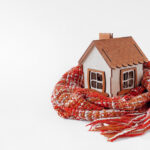Raised flooring acoustics: which problems need solving?
“Our neighbour shouts and listens to music at full volume”
“The bar under my house stays open until the small hours”
“A new family has just moved into my building and the children scream all day and night”
“On the floor below they complain about our footsteps and I’d like to be free not to create a disturbance”
These are the main complaints that we hear repeated continually from those asking for information on raised flooring acoustics. Current legislation tends, or should tend to, solve the problem of acoustic insulation in state-of-the-art homes, although we still encounter a number of situations not complying with the legislations (Framework law 26/10/1995 no.447, implemented with the DPCM (Decree of the President of the Council of Ministers) of 5/12/1997). For residential buildings, the noise of footsteps needs to be reduced to at least 63 dB and, if that is not the case, intervention is required to make it legally compliant. The kind of noise that disturbs us the most can be airborne, so music, TV, voices and chatter, or structural coming from the building itself.

What do we mean by raised flooring acoustic insulation
Acoustic insulation does not just refer to the flooring but all the building’s surfaces. Talking about raised flooring acoustic insulation we refer to the use of sound-insulating, sound-proofing material or material that actively contributed to reducing noise in any kind of building.
As it consists of highly dense material so naturally sound-insulating, the solution for raised flooring acoustic insulation is technically simple to achieve and guarantees compliance with building regulations. The technique consists of inserting a layer of insulating material between the floor and the treadable surface, in order to produce a system capable of absorbing the impact produced by walking, irrespective of the kind of flooring underneath. This is why the raised flooring acoustic insulation technique is the ideal solution even when you need to soundproof a pre-existing floor, which avoids demolition work that requires an enormous amount of time and money.
Raised flooring acoustics and other advantages
As well as eliminating the noise of footsteps, the raised flooring acoustics achieved with quality materials and state-of-the-art techniques also create insulation against other airborne noises. Furthermore, the use of porcelain stoneware for raised flooring acoustic insulation guarantees very high acoustic performance, but also offers further benefits from a comfort living point of view and energy saving. Let’s take a look at them together:
- The possibility of arranging all the piping in the chamber created under the treadable surface, so that maintenance work will be easier and faster;
- Possibility of personalising the flooring configuration;
- Possibility of moving, removing or reconfiguring the flooring;
- No masonry work;
- Easy to clean.



